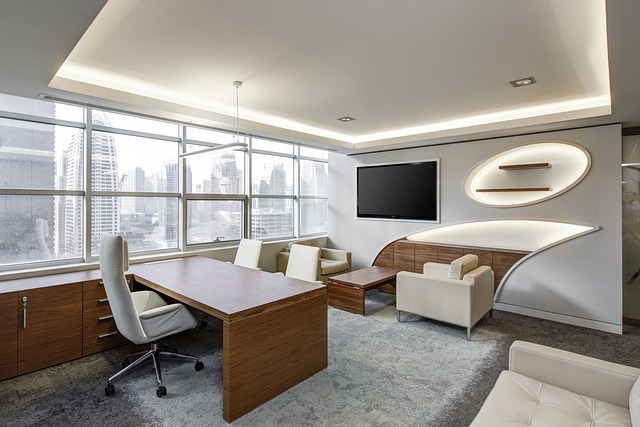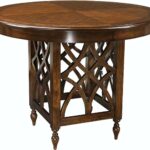If we’re talking about conventional fixed-height desks, the “standard” average height is around 30″, if there is such a thing, but it’s important to note that the standard desk height is not ideal for taller and shorter-than-average individuals.
Depending on your height, body proportions, chair adjustability, intended use, and other factors, the proper desk height can vary by several inches up or down.
Knowing the standard desk height can help, but determining the correct desk height for you is a more important, and trickier, task. The task of really nailing your desk ergonomics can become downright daunting when you try to determine whether you need a monitor arm and/or keyboard tray. If you work long hours in front of a computer, it’s essential that you get your workstation set up to fit your personal anthropometry (fancy word for your body proportions) or you might wind up unwittingly putting yourself at risk for long-term ergonomic injury.
Table of Contents
Why Does Desk Height Matter?
Few of us give much thought to how our desks are set up, despite the fact that we can spend up to 67 days a year sitting behind a desk. In fact, many of us are unaware of the ergonomically ideal height for our desks and office chairs.
The standard desk height is 73 cm. Perfect if you’re 6 feet tall, but less than ideal if you’re not the “average man” the office world is designed for. The average British person is 3 inches shorter than that at 5 feet 9 inches, which is perhaps the most concerning aspect of this. Since you’re reading this blog while sitting at a desk, it’s likely set up improperly.
Not only can a poor desk set up cause short term discomfort as your arms struggle to reach the keyboard or your knees constantly bump off the underside, but studies have concluded that sitting in these positions can lead to chronic back pain.
The Correct Height for Your Desk
Now that you’re asking, what height should your desk actually be set at? The answer is very simple:
(Your Height in Inches) + 1 = Your Perfect Desk Height in Cm
If we use the 73 cm desk set for a person who is 6 feet tall, all we need to do is add or take away 1 cm for each inch you are taller or shorter than 6 feet. That is to say, at a towering 6 feet 6 inches, Dave Bautista would be most comfortable at a desk that is 79 cm high, whereas Tom Holland, a fellow Avenger, should be browsing (or crawling) the web from a desk that is only 67 cm high.
A height-adjustable desk’s proper installation is influenced by height as well. A height-adjustable desk should ideally be set at elbow height, where the elbow is bent at a 90-degree angle and the forearm and upper arm are parallel when the desk is in use. The ideal standing desk height for a person 6 feet tall is approximately 109 cm, though there may be some variation because everyone’s body proportions are unique. It’s crucial to find a setup that makes you feel comfortable.

Average Desk Height
If you’ve ever purchased a desk for your home or worked in an office, you’ve probably noticed that they all tend to be the same size. In reality, a desk must be at least 29 inches (73.5 cm) tall to meet industry standards. This would be the ideal height for people who are 6 feet tall, so it is curious that it has become the norm.
The average heights of American men and women are 5 feet 9.2 inches for men and 5 feet 3.7 inches for women, respectively, as stated in the aforementioned link.
In actuality, most people are dealing with an office desk that is much too tall for them. Of course, there are also a lot of people who are taller than 6 feet and require a much taller office desk for ergonomic reasons.
Correct Standing Desk Height
It is much preferable to purchase an adjustable standing desk rather than one that isn’t if you plan to purchase a standing desk. By doing this, you will have complete control over the desk height.
The arms are at a 90-degree angle on the desktop, as shown in the illustration, and the monitor is elevated to eye level.
Although fixed standing desks from Varidesk have a height of 47 inches, there is no real industry standard for these desks.
As long as your height falls within the range of an adjustable standing desk, you will be fine.
This requires a small calculation for standing desk converters. Recall that we stated the typical desk height was 29 inches. Well, you’ll need to add this to the standing des
Correct Seated Desk Height
You can see that a person who is approximately 6 feet tall can use a desk that is 29 inches high. We now think that you don’t have to be completely accurate; in fact, a lot of websites will give you slightly different height recommendations. As we previously stated, it depends on the individual and what feels comfortable to you. Try to stay within a range of 1 to 2 inches of your actual height when expressing this.
As a general rule, the 29-inch industry standard should be increased or decreased by 0.4 inches for every inch you are taller or shorter than 6 feet.
e.g. If you are 6 feet 3 inches tall, you must add 3 x 0.4 to 29 to get 30.2 inches.
Correct Chair Height
The ideal chair height is frequently disregarded. You can roughly see where you need to be by looking at the addition we made to our table. As a general rule, your feet should be flat on the ground, and your hips and knees should be close to a 90-degree angle. You will feel the most comfortable and least strain on your joints in this position.
Read about Average Desk Height
Determine the Correct Monitor Arm Height
In general, the maximum height of your monitor arm (A in the image to the right) plus the height from the VESA mount on the back of your monitor to the top edge of your monitor (B) must be greater than or equal to your eye height (C) minus the height of your desktop (D). You can read much more about this in detail in our roundup of monitor arm reviews. This guarantees a monitor arm has sufficient height to position you and your setup ergonomically.
When you have a monitor arm installed, your monitor should be set up so that you can hold your head straight, without bending it forward or backward. By simply adjusting your eyes downward, you should be able to comfortably see the entire monitor area without having to tilt your head forward.
How to Determine If You Need a Keyboard Tray?
Consider using a keyboard tray if you have trouble typing for extended periods of time or if your forearms are bent upward, meaning your hands are higher than your elbows.
Consider using a keyboard tray to support your arms in a more neutral position if you can type with your arms at 90 degrees but are still uncomfortable. Without a keyboard tray, a neutral arm position, which is between 15 and 45 degrees, is not possible on typical desks.
FAQs
What If I Have a Keyboard Tray?
For a seated position, a keyboard tray that is below the desk surface should be adjusted between 22 and 30 inches. It should be between 36 and 46.5 inches if you’re standing.
What is the Proper Height for a Desk?
Like previously mentioned, the work surface of a standard desk height should be about 28″ to 30″, which is a good rule of thumb for people between 5’8″ and 5’10” tall that uses a conventional task chair.
Of course, you’ll need to adjust for height using a desk riser block or an adjustable desk if you’re shorter or taller.
Tips on a Better Ergonomic Workstation
The height of your desk should be at a proper position where your arms are rested comfortably with your keyboard. You should also relax your shoulders, and let it “hang” naturally.
Keyboard and mouse should be placed on the same level and close to each other. Place your keyboard and mouse so that your elbows are at a 90-degree angle and rest on the armrest of your chair. To prevent any future pain, keep your wrist straight while typing or using the mouse.
Your Monitor should be at eye level so you’re not stressing your neck by tilting it up or down when viewing. Since there are different sizes of monitors, you should, if possible, tilt your screen by about 20 degrees (as shown in the image above). Make sure there is a safe distance so that you won’t experience eye strain, like at least 15 inches away from you.













